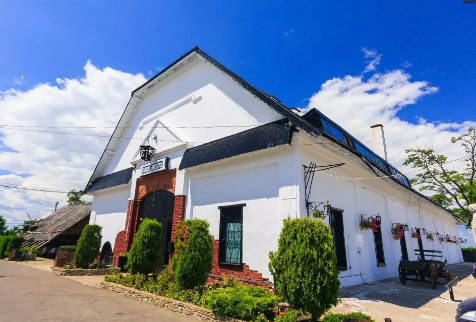Thursday, 20th of June – Welcome reception
On Thursday evening, all participants and their companions are kindly invited to the welcome get-together reception, organized at Panoramic restaurant, Unirea Hotel (address: Piața Unirii 5), https://www.hotelunirea.ro/en/restaurant-iasi.
Friday, 21st of June – Excursion and Conference Dinner
On Friday afternoon, all participants and their companions are kindly invited to the Conference Excursion and Conference Dinner, included in the registration fee (English language guided tour).
Itinerary: Iași – Ruginoasa – Miclăușeni – Hanu Ancuței – Iași
Distance covered: approx. 215 km (approx. 3.5 h travel time)
Duration: 9 h (including travel time, visits and Conference Dinner)
Highlights:
Alexandru Ioan Cuza” Memorial Museum from Ruginoasa
 “as long as this country has history, the most beautiful page will be that of Alexandru Ioan I” (Mihail Kogălniceanu)
“as long as this country has history, the most beautiful page will be that of Alexandru Ioan I” (Mihail Kogălniceanu)
The palace, which houses the Alexandru Ioan Cuza Memorial Museum, was built in the first decade of the nineteenth century (1804) by the treasurer Sandulache Sturdza, who commissioned Viennese architect Johan Freiwald to build a luxurious residence on the site of the old boyar house of his ancestors.
In April 1857, the palace, abandoned and threatened by ruin, was mortgaged. The interest could not be paid on time, so the property was auctioned and bought in 1862 by Alexandru Ioan Cuza, the ruler of the United Principalities, who died in exile in Heidelberg, Germany (1873). The inanimate body of the ruler was brought and buried at Ruginoasa near the church. After the war, the ruler’s remains were deposited at the Church of the Three Hierarchs Monastery in Iasi, where it still is today. Destroyed during the Second World War, the palace has regained its architectural glamor and its specific charm, the most recent design and functional remodeling taking place between 2012 and 2013.
Sturdza Castle from Miclauseni
 Built on a 600-year-old Moldavian settlement, the castle built by George Sturdza between 1880 and 1904 is today a true neo-gothic architectural jewel, distinguished by the ornamental flags and heraldry that adorn the facade and watch towers guarding the park. The castle contained a valuable collection of books and documents, medieval costumes, weapons, jewelry, paintings, Cararra marble busts, silverware, and archeological, numismatic and epigraphic pieces of great value.
Built on a 600-year-old Moldavian settlement, the castle built by George Sturdza between 1880 and 1904 is today a true neo-gothic architectural jewel, distinguished by the ornamental flags and heraldry that adorn the facade and watch towers guarding the park. The castle contained a valuable collection of books and documents, medieval costumes, weapons, jewelry, paintings, Cararra marble busts, silverware, and archeological, numismatic and epigraphic pieces of great value.
During the Second World War, the Castle was abandoned because the front was very close to it. In this situation, the castle was devastated and, besides the books and collections mentioned, all furniture and valuables were stolen.
Ancuta’s Inn (Hanu Ancutei)
 “You must know that Ancuta’s Inn was not an inn, it was a stronghold” (Mihail Sadoveanu)
“You must know that Ancuta’s Inn was not an inn, it was a stronghold” (Mihail Sadoveanu)
According to some preserved documents, Ancuta’s Inn dates back to the eighteenth century, when it seems to have opened its doors to the merchants who are on the way to Roman, Suceava or Iaşi. This building lasted for a long time until, in 1943, the owner tore it down, the building remaining only the cradle of some wonderful stories by Mihail Sadoveanu. With the walls in ruins, the inn kept watch over the deserted land until two decades and a half ago, when it became once again a place of reminiscence, but with other stories and other living heroes in those times. Arranged with all the era specific interior design elements, Ancuta’s Inn stands firmly in the memory of his visitors, who are always welcomed with hospitality.
